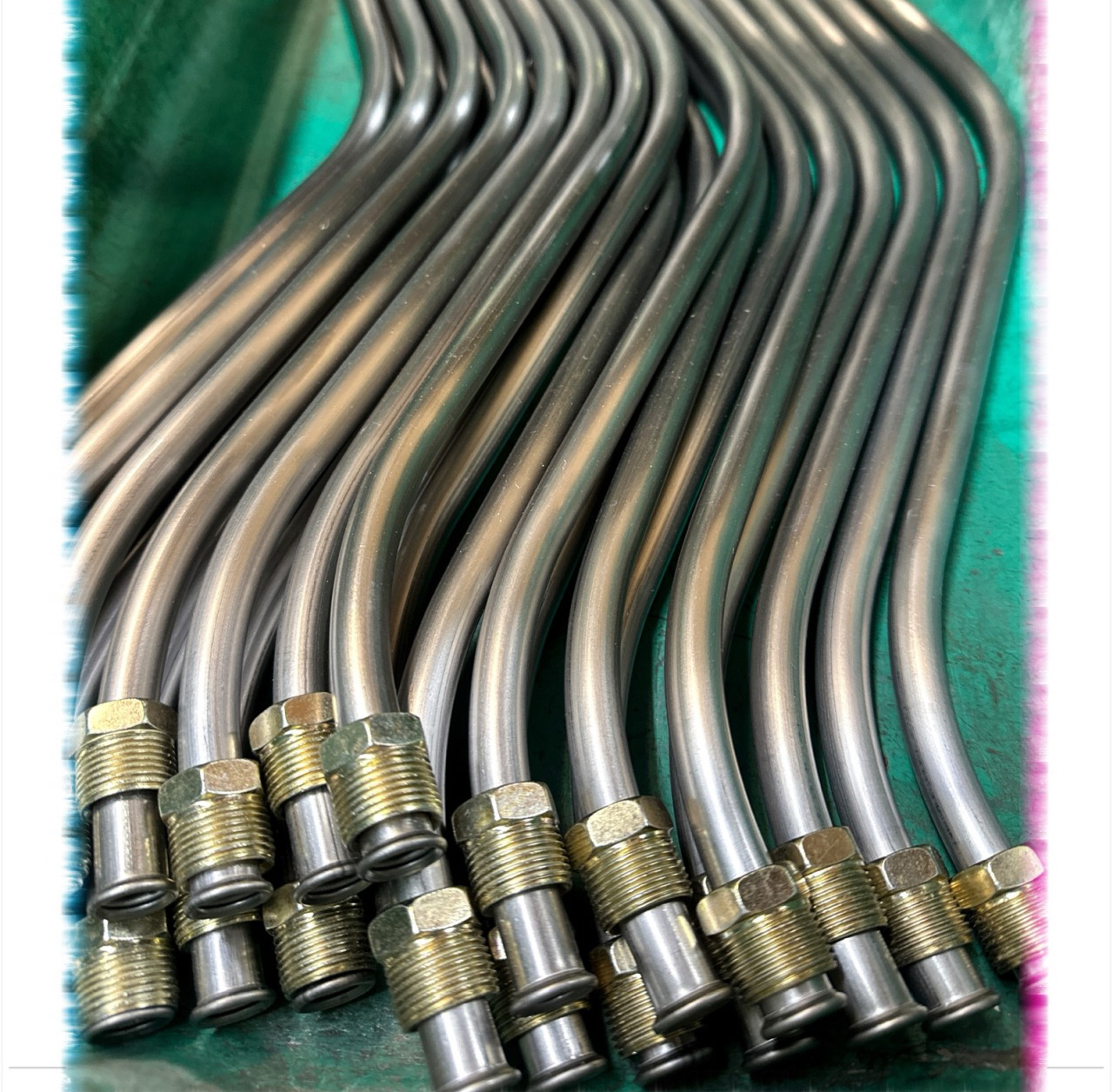The tube bending process is a metalworking technique used to permanently bend tubes into specific shapes and angles while maintaining the integrity of the material. Here’s a breakdown of the key aspects involved:
1. Understanding Tube Bending
- Tube bending is applied in industries such as automotive, aerospace, furniture, and construction.
- Tubes can be made from various materials like steel, aluminum, copper, and titanium.
- The process requires precise calculations to avoid deforming the tube’s cross-section or compromising its structural strength.
2. Preparation
- Material Selection: The type of tube material dictates the method and tooling required.
- Tube Dimensions: The diameter, wall thickness, and length of the tube affect bending feasibility.
- Bending Radius: The minimum radius is determined by the tube material and its application.
3. Methods of Tube Bending
- Rotary Draw Bending:
- Uses a fixed die to maintain the shape of the tube while bending.
- Produces precise and repeatable bends, often used for automotive and aerospace components.
- Compression Bending:
- The tube is clamped and pushed around a stationary bending die.
- Simpler and less expensive but may not produce as accurate results.
- Mandrel Bending:
- A mandrel (a supporting rod) is inserted into the tube to prevent collapse during bending.
- Ideal for thin-walled tubes and tight radius bends.
- Roll Bending:
- Employs rollers to gradually curve the tube.
- Suitable for large-radius bends.
- Freeform Bending:
- Allows for non-uniform and complex shapes.
- Controlled by advanced CNC machinery.
4. Key Components of the Process
- Dies and Tooling: Specialized tools like bend dies, clamp dies, and pressure dies are crucial.
- Lubrication: Reduces friction between the tube and tools to prevent damage.
- Springback Compensation: Adjustments are made to account for the natural tendency of the tube to return slightly toward its original shape after bending.
5. Quality Control
- Visual Inspection: Checks for cracks, wrinkles, or deformation.
- Measurement: Ensures the bend angles and radii match specifications.
- Testing: May include pressure or load testing to verify the structural integrity of the bent tube.
6. Challenges and Solutions
- Wrinkling: Prevented by using mandrels or adjusting tooling pressure.
- Flattening: Minimized with correct tooling and material selection.
- Surface Damage: Reduced with proper lubrication and tool maintenance.
The tube bending process combines engineering precision and material science to create functional, aesthetically pleasing, and structurally sound components. Request a quote today from ACME Tube Bending!

One Comment “Tube Bending Process”
Comments are closed.